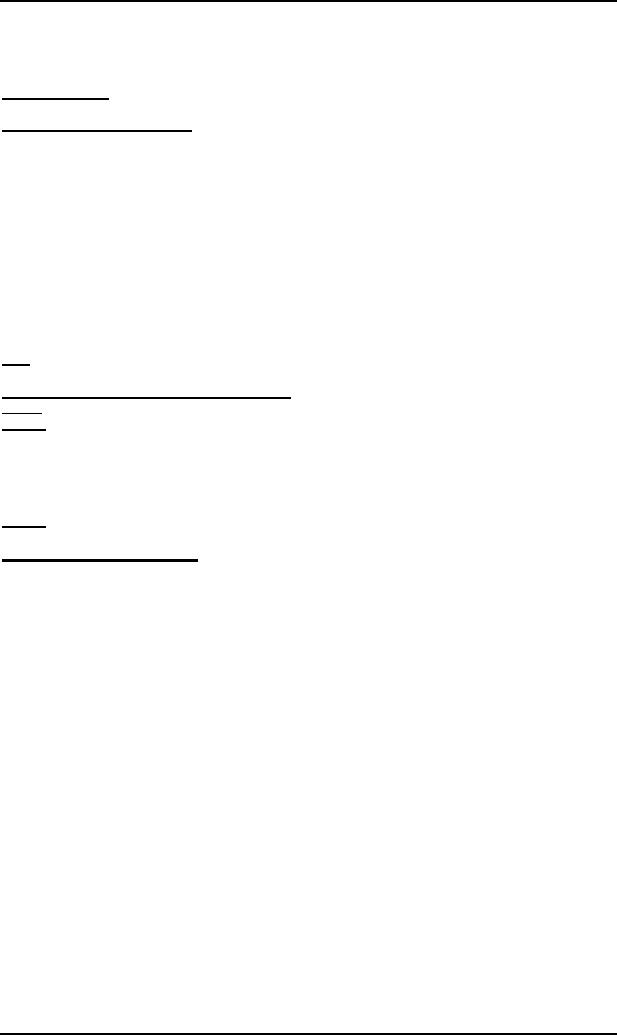 |
Regular Expression, Recursive definition of Regular Expression |
| << Kleene Star Closure, Recursive definition of languages |
| Equivalent Regular Expressions >> |

Theory of
Automata
(CS402)
Theory of
Automata
Lecture
N0. 3
Reading
Material
Chapter
4
Introduction
to Computer Theory
Summary
RE,
Recursive definition of RE, defining
languages by RE, { x}*, {
x}+, {a+b}*, Language of strings
having
exactly
one a, Language of strings of even
length, Language of strings of odd length, RE defines
unique
language
(as Remark), Language of strings having
at least one a, Language of strings
having at least one a
and
one b,
Language of strings starting with aa and
ending in bb, Language of
strings starting with and
ending in
different
letters.
Regular
Expression
As
discussed earlier that a* generates Λ, a, aa, aaa, ...
and a+ generates a, aa,
aaa, aaaa, ..., so the
language L1
= {Λ, a,
aa, aaa, ...} and L2 = {a, aa, aaa,
aaaa, ...} can simply be
expressed by a*
and a+, respectively.
a* and a+
are called
the regular expressions (RE)
for L1 and L2 respectively.
a+, aa* and a*a generate L2.
Note
Recursive
definition of Regular
Expression(RE)
Step 1:
Every letter of Σ including Λ is a
regular expression.
Step 2:
If r1 and r2 are regular expressions
then
(r1)
r1 r2
r1 + r2 and
r1*
are
also regular
expressions.
Step 3:
Nothing else is a regular
expression.
Method 3
(Regular Expressions)
Consider
the language L={Λ, x, xx,
xxx,...} of strings, defined
over Σ = {x}.
We can
write this language as the
Kleene star closure of alphabet Σ or
L=Σ*={x}* .
This
language can also be
expressed by the regular
expression x*.
Similarly
the language L={x, xx,
xxx,...}, defined over Σ =
{x}, can be expressed by the
regular expression x+.
Now
consider another language L,
consisting of all possible
strings, defined over Σ =
{a, b}. This language
can
also be
expressed by the regular
expression (a + b)*.
Now
consider another language L, of
strings having exactly one
a, defined over Σ = {a, b},
then it's regular
expression
may be b*ab*.
Now
consider another language L, of
even length, defined over Σ =
{a, b}, then it's
regular expression may
be
((a+b)(a+b))*.
Now
consider another language L, of
odd length, defined over Σ =
{a, b}, then it's
regular expression may
be
(a+b)((a+b)(a+b))*
or ((a+b)(a+b))*(a+b).
Remark
It may be
noted that a language may be
expressed by more than one
regular expression, while
given a regular
expression
there exist a unique
language generated by that
regular expression.
Example
Consider
the language, defined
over
Σ = {a , b} of
words having at least one a,
may be expressed by a regular
expression (a+b)*a(a+b)*.
Consider
the language, defined over Σ
= {a, b} of words having at
least one a and one b,
may be expressed by a
regular
expression (a+b)*a(a+b)*b(a+b)*+
(a+b)*b(a+b)*a(a+b)*.
Consider
the language, defined over Σ
={a, b}, of words starting
with double a and ending in double b
then its
regular
expression may be
aa(a+b)*bb
Consider
the language, defined over Σ
={a, b} of words starting
with a and ending in b
OR
starting
with b and ending in a, then
its regular expression may
be a(a+b)*b+b(a+b)*a
11
Table of Contents:
- What does automata mean, Introduction to languages
- Kleene Star Closure, Recursive definition of languages
- Regular Expression, Recursive definition of Regular Expression
- Equivalent Regular Expressions
- Finite Automaton
- Equivalent FAs
- FA corresponding to finite languages
- Examples of TGs: accepting all strings
- Generalized Transition Graphs
- Nondeterminism, Kleene’s Theorem
- Proof(Kleene’s Theorem Part II)
- Kleene’s Theorem Part III
- Concatenation of FAs
- Closure of an FA
- Nondeterministic Finite Automaton, Converting an FA to an equivalent NFA
- NFA with Null String
- NFA and Kleene’s Theorem
- NFA corresponding to Concatenation of FAs
- Distinguishable strings and Indistinguishable strings
- Finite Automaton with output, Moore machine
- Mealy machine
- Equivalent machines
- Mealy machines in terms of sequential circuit
- Regular languages, Complement of a language
- Nonregular languages
- Pumping Lemma
- Pumping Lemma version II
- Pseudo theorem
- Decidability
- finiteness of a language
- Context Free Grammar (CFG), CFG terminologies
- Trees
- Polish Notation (o-o-o)
- Total language tree, Regular Grammar
- Null Production
- Chomsky Normal Form (CNF)
- A new format for FAs
- Nondeterministic PDA
- PDA corresponding to CFG
- Conversion form of PDA
- Conversion Form, Joints of the machine
- Row language, Nonterminals
- Non-Context-Free language, Pumping lemma for CFLs
- Decidablity, Parsing Techniques
- Turing machine